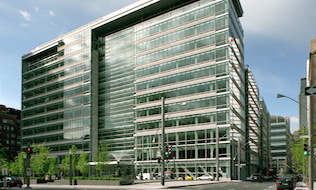
The Caisse de dépôt et placement du Québec is emphasizing global investments even as it noted the impact of political uncertainty in its newly released annual report for 2016.
Read: Caisse focuses on ‘all-terrain portfolio’ as return drops to 7.6%
“The year 2016 was anything but boring. After years of growth fuelled by low interest rates, many had feared a market correction. Instead, politics stole the show,” said Michael Sabia, president and chief executive officer at Caisse, in the report.
“That said, changing course would be a mistake — for global economic growth and for la Caisse itself. True, the pace of trade may slow over the short term. But strong economic growth in India, China, Mexico and elsewhere is here to stay. Being absent from high-growth countries is simply not a viable option for an investor like la Caisse.”
Indeed, the Caisse has continued to increase its exposure to global markets, reaching $179 billion at the end of 2016. That was up from $106 billion at the end of 2011.
Some of its investments abroad include global ports and port terminals, a European laboratory testing company, a Manhattan office tower, logistical properties in Shanghai and other Asia-Pacific cities and an Australian insurance company.
The Caisse also continues to invest in Quebec’s private sector and has partnered with more than 550 small- and medium-sized enterprises through direct and indirect investments.
Read: U.S. pension funds looking at Canadian model for investment practices
“While la Caisse continues to expand globally, we remain rooted in Quebec. Last year, our new investments and commitments in Quebec reached $2.5 billion, bringing their total to $13.7 billion since 2012,” said Sabia. “Our goal in Quebec is to ensure that our activities and our investments have a lasting impact that goes far beyond the numbers themselves. How? By driving private investment.”
Specifically, the Caisse has put capital on technological companies including Triotech, Felix & Paul Studios, Stingray Digital Group Inc., Hopper and AddÉnergie Technologies Inc.
The Caisse has also launched Espace CDPQ, a growth and globalization hub for Quebec businesses, and Fonds Espace CDPQ, a $50-million fund to finance Quebec companies that have ambitions to expand. It’s also investing in an integrated electric, automated public transit network for the Montreal area.
Read: Why big pension funds love Australian ports
The Caisse has made some changes to its three main asset classes: equities, fixed income and real assets. In 2016, it implemented an alternative beta mandate in its equity portfolio and developed a value-based investing strategy.
The Caisse also boosted global investments in less liquid assets such as real estate, infrastructure and private equity. It invested $5.8 billion in real estate and $7.8 billion in private equity, as the portfolio’s exposure outside of Canada increased by 70 per cent by the end of 2016.
In terms of returns from the different asset classes, Caisse saw a return of 10.4 per cent from equities, 2.9 per cent from fixed income and 10.6 per cent in real assets in 2016. According to the annual report, the pension fund reported an overall return of 7.6 per cent and a $22.7-billion increase in net assets.
The increase in assets came from $18.4 billion of net investments and $4.3 billion of net deposits. The pension fund’s overall return also beat its benchmark portfolio by 1.8 percentage points.
Read: Caisse and partner reinvest in fund to support Quebec SMEs
